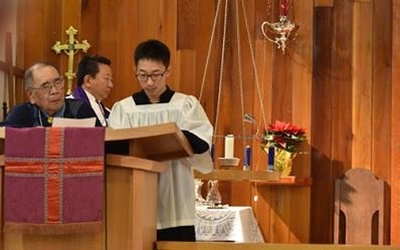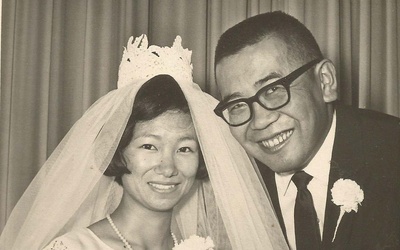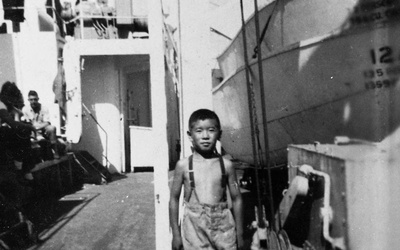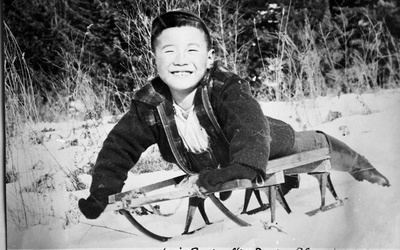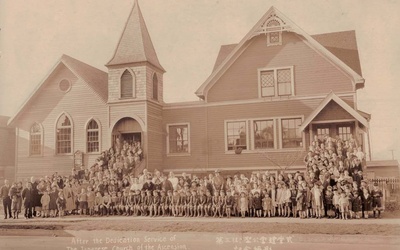A Japanese Canadian Child-Exile: The Life History of Basil Izumi
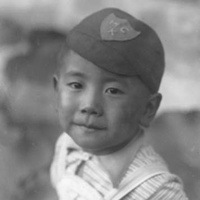
This series is the life history of Basil Tadashi Izumi, who was born into a Japanese Canadian Anglican family in Vancouver shortly before World War II. At the age of six he was uprooted with his family from their life in Vancouver and was subsequently interned in several camps near Lake Slocan. At the end of the war his family was exiled to Japan, but three years later, at the age of twelve, he returned alone to British Columbia where he has lived ever since.
Because the Japanese Canadian Anglican church in Vancouver, namely the Holy Cross Church (called Holy Cross Mission until 1970), has played such an important role in his life all the way from his earliest childhood to the present, Parts 1 and 2 will give a very brief historical overview of the relationship between the Anglican Church and Japanese Canadians, focusing especially on some events that are particularly relevant to Basil’s life history. Basil’s story will then begin from Part 3.
Stories from this series
Part 7: Basil and the Holy Cross Anglican Church
June 5, 2018 • Stan Kirk
Read Part 6 >> As noted previously, Basil’s parents had both been active members of the Holy Cross Anglican mission, and as a small child he had attended Sunday school and kindergarten there before the internment. Upon returning to Canada from Japan, he attended the Anglican Church in Vernon with his aunt and grandmother. When they moved to North Vancouver1 in 1954 they began attending a nearby Anglican Church, Saint John the Evangelist. In contrast to those Japanese Canadian Anglicans …
Part 6: Life in Canada
May 29, 2018 • Stan Kirk
Read Part 5 >> Basil stayed with his grandmother and aunts in Vernon from 1949 till they moved to Vancouver in 1954. He says, “At first, during the internment, they had been at Mento Mine outside of Lilloet, BC, at one of the self-supporting sites.1 My other aunt had stayed in east Lilloet along with my grandmother and grandfather. My grandfather had passed way from old age in Lilloet in 1944. When the war ended, both my aunts’ families and …
Part 5: Exile to Japan and Return to Canada
May 22, 2018 • Stan Kirk
Read Part 4 >> Exile to Japan Basil was nine years old when his family was exiled to Japan. He was never told the reasons why his parents chose to go to Japan rather than move to eastern Canada. He does not recall them being particularly worried about the fates of relatives in Japan, which was a compelling reason for many other families to choose to go to Japan. However, his mother did tell him much later that she was …
Part 4: Uprooting and Internment
May 15, 2018 • Stan Kirk
Read Part 3 >> Basil had just graduated from kindergarten when the uprooting and internment started. His father was initially sent with the other able-bodied young men to work on a road camp while Basil and his mother were sent directly from Vancouver to the Slocan City internment camp in eastern BC. He clearly remembers getting on the train to go to the internment camp. It was his first train trip, so it was exciting for him, but he had …
Part 3: Birth and Family Background of Basil Izumi
May 8, 2018 • Stan Kirk
Read Part 2 >> Basil Tadashi Izumi was born April 25, 1937, in Vancouver General Hospital. He was delivered by Dr. H. M. Shimokura, who later would earn the trust of Japanese Canadians by his treatment of numerous patients in the harsh conditions of Hastings Park and then at Tashme internment camp. Basil has two younger sisters, both of whom were born during the internment. The first, Megumi Grace, was born on April 22, 1944, in New Denver hospital, and …
Part 2: The Realization by Anglican Japanese Canadians That They Had Lost Their Church Properties
May 1, 2018 • Stan Kirk
Rear Part 1 >> In April, 1949, approximately four years after the end of the war, the ban on Japanese Canadians returning to the coast was lifted and some started moving back to the Vancouver area. Unlike before the war when most lived in or near Steveston or the Powell Street area, many of these returnees ended up living scattered in various parts of the city. Consequently, some of the Anglicans among them began to attend non-Japanese Canadian Anglican churches …

